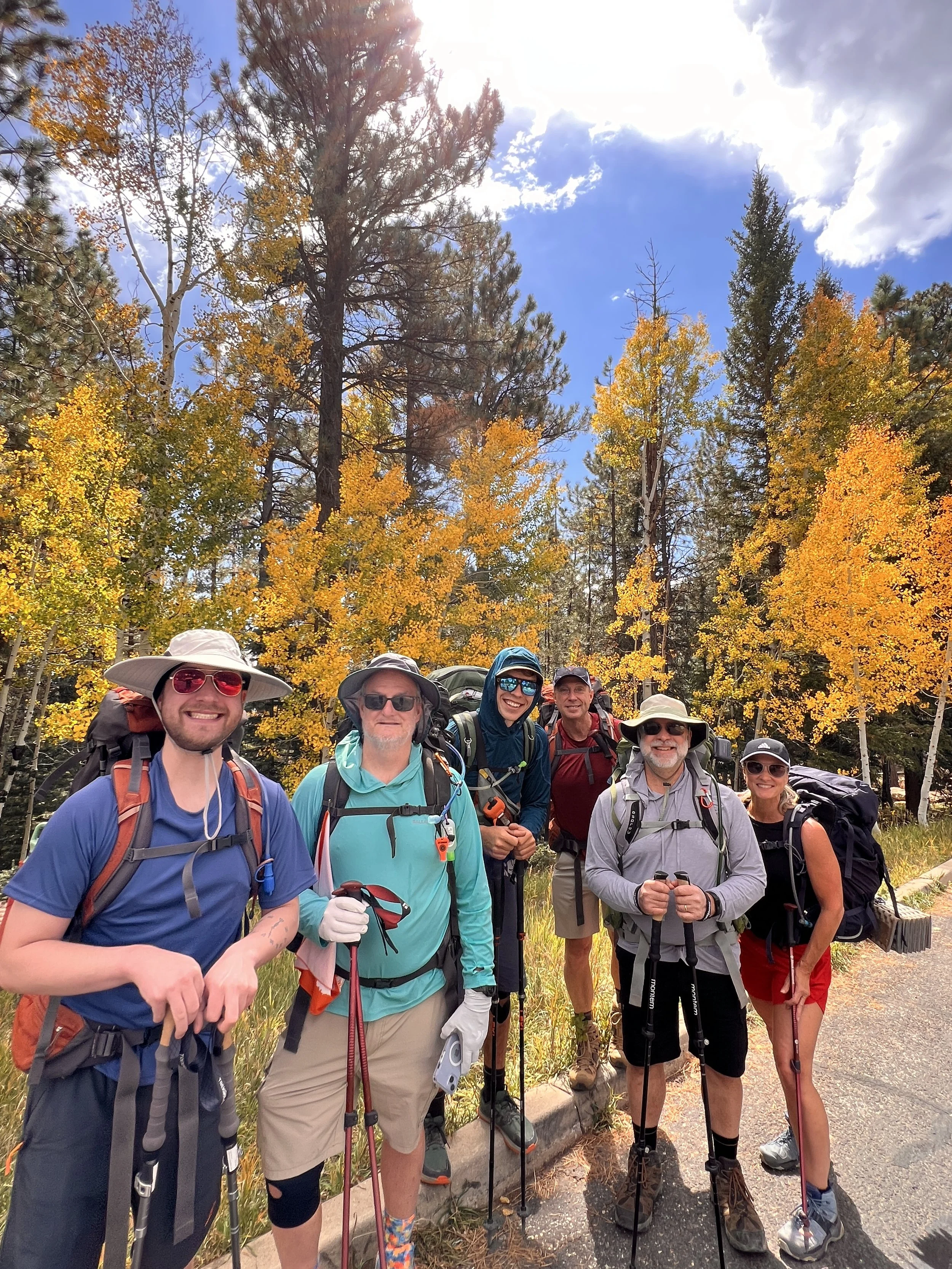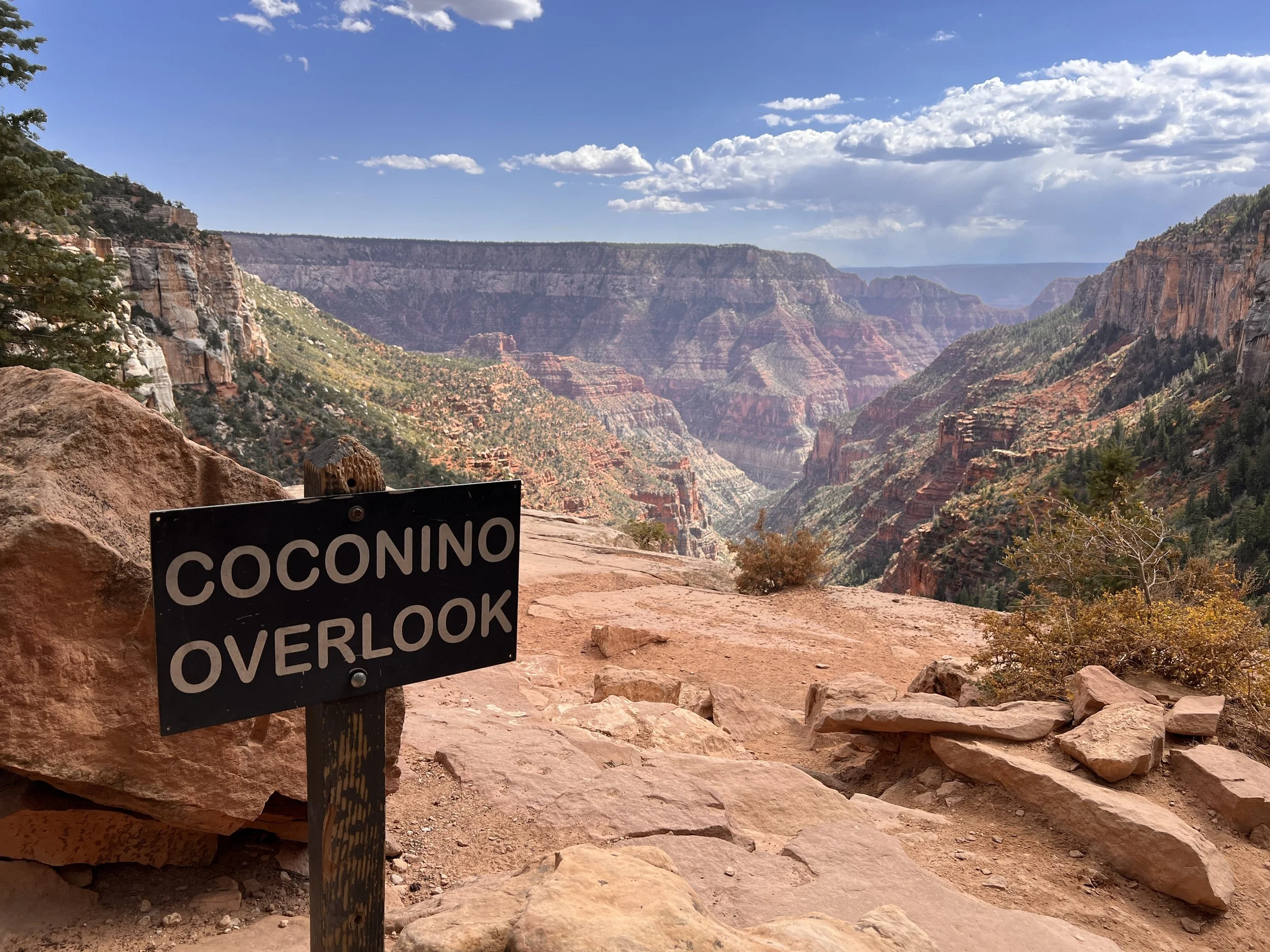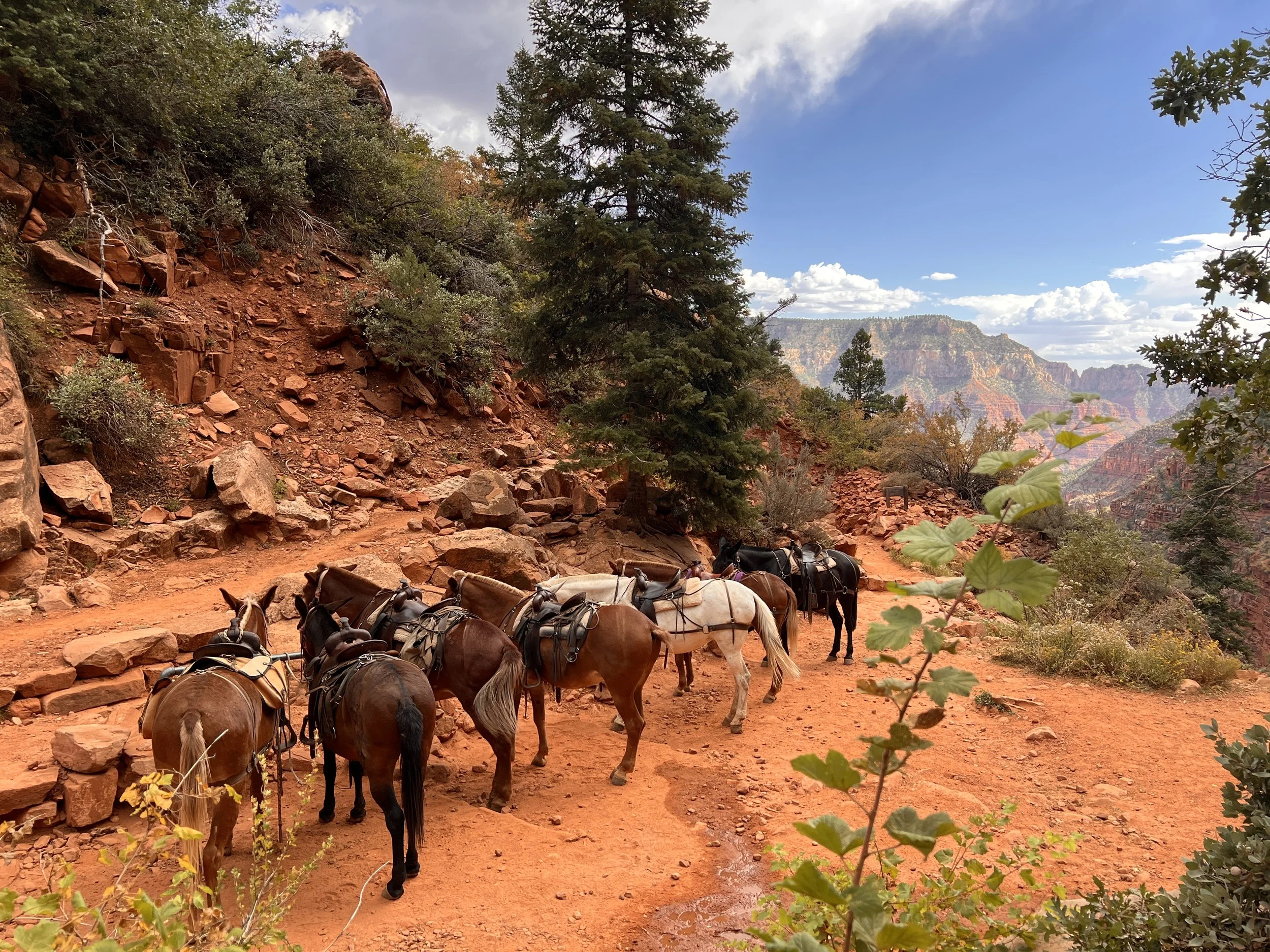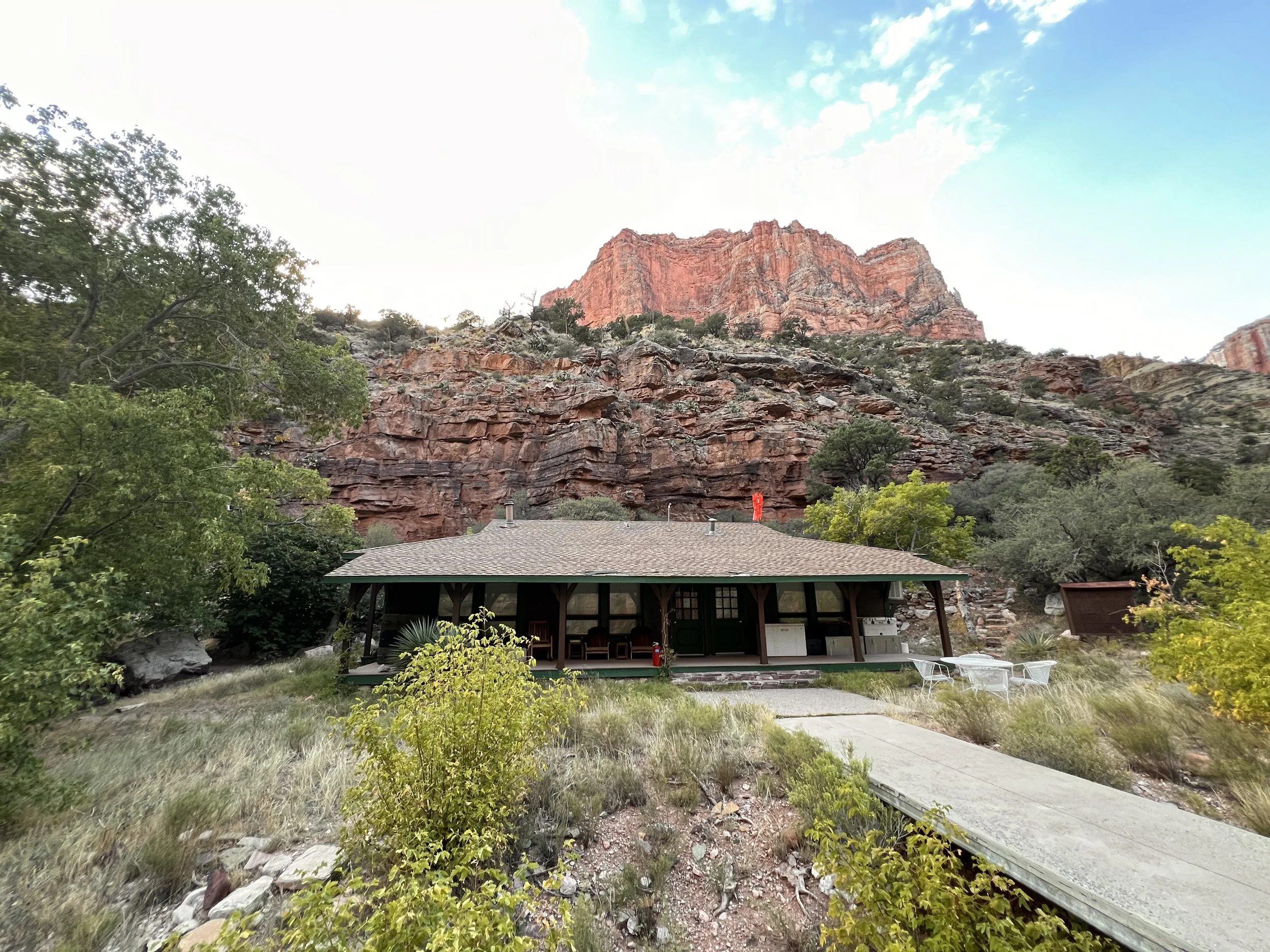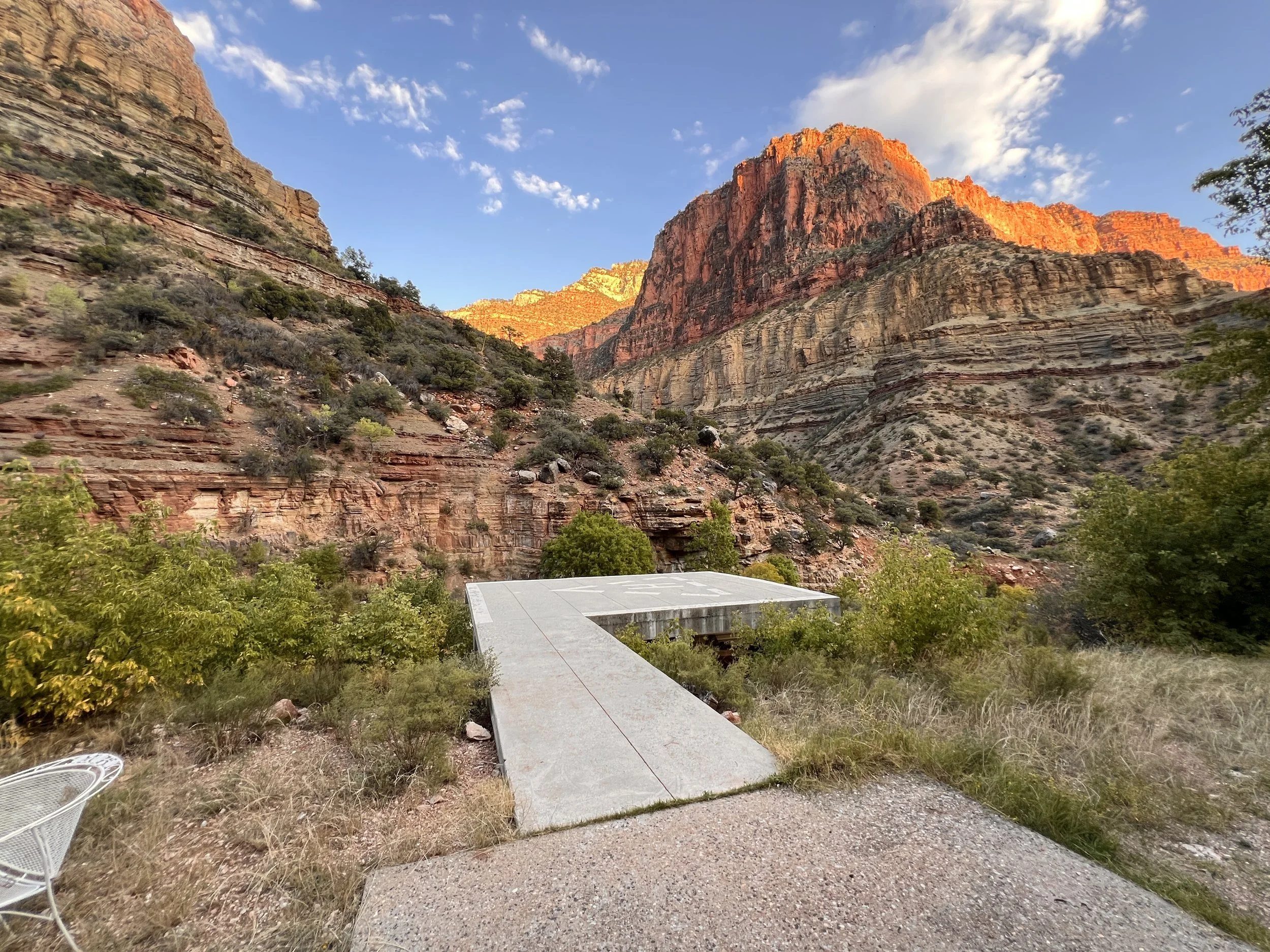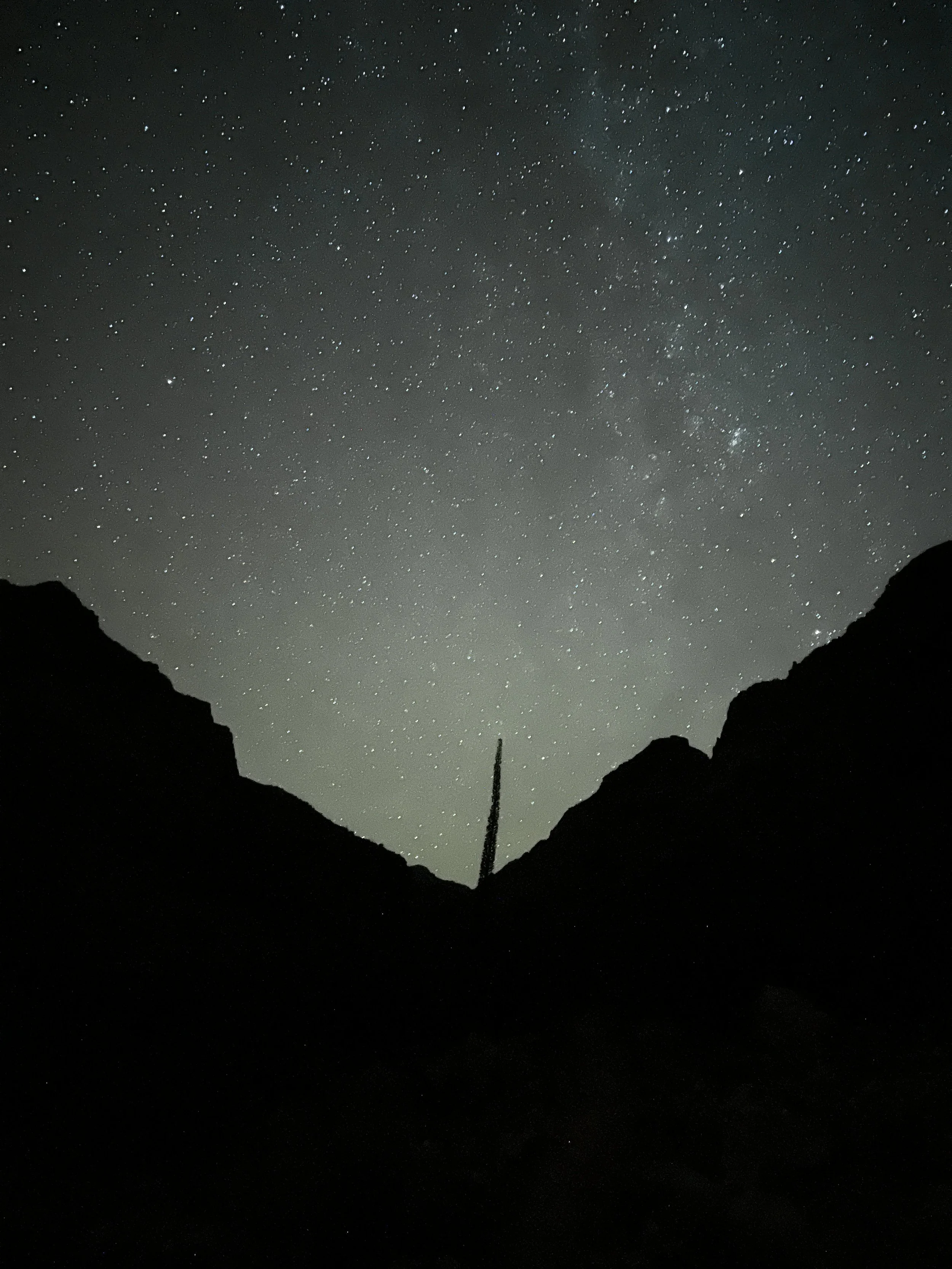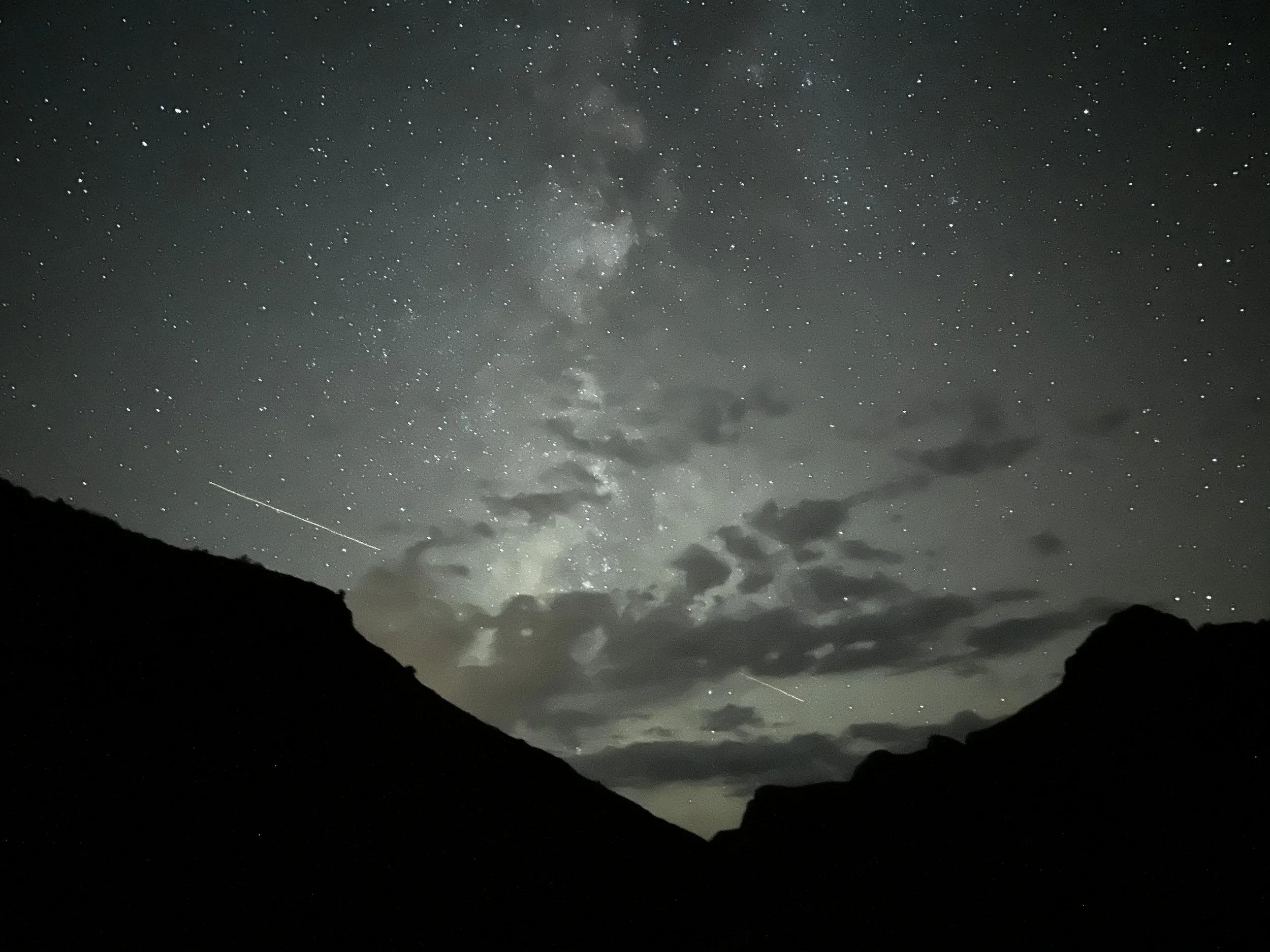Day 1: Descent to Cottonwood Campground
Wes, Kemper, Jonathan, Mike, George, and Tracy eager for the descent!
We started our descent to Cottonwood campground from the North Kaibab Trailhead on the North Rim of the Grand Canyon. This first leg of our journey started out at about 12:30 pm. The temperature was relatively a cool 82 degrees F at the top of the canyon and the trail was mostly in shadows. After our time in Phoenix, 82 felt cool!
Nostalgic first stop on the hike.
Our first stop was the Coconino Overlook which was about 0.7 miles and 663 feet down into the Canyon. This spot has a bit of history for Wes and me. We descended to this overlook when we took a trip to the Grand Canyon when Wes and his sister, Maggie, were young. We stayed at the lodge on the North Rim and explored the area. I remember Wes wanting to go further down into the canyon but his mom, Karen, and I put a limit on how far down we were willing to go. Unlike Wes, we had a pretty firm grasp of the work needed to get back to the top. 😊 Wes recognized the overlook and mused, “I remember now wanting to keep going into the canyon! I wonder if that desire has been slowly growing for all these years and that is why we are here now?”
Mules resting at the Coconino overlook.
There is important hiking etiquette we learned before stepping foot on the trail. The people hiking uphill have the right of way. Those going downhill are supposed to step to the side and let the folks climbing up go past. Whoever sees the uphill folks first yells, “Incoming!” to signal the group. We found the uphill hikers very much appreciated our adherence to this simple rule. I didn’t quite understand why they were so grateful until we were the folks heading uphill towards the south rim. So many downhill hikers didn’t respect the rule! It could lead to some awkward interactions when the downhill hikers didn’t yield.
More importantly than the hiker right of way is the rules governing interactions with the mules! The mules have the right of way! Always! Jonathan emphasized that we must move off the trail on the side away from the edge and let the mules pass. Otherwise you risked being knocked off the trail, with potentially lethal consequences!
A friend of mine gave me some great advice for the hike. He said, “Don’t forget to turn around and look back from where you came from.” He wanted me to realize that the views are different from each direction. This led to me lagging behind the most. I was constantly switching between the two views, drinking in the beauty all around me, and making sure I took photos from each vantage point. My soul was the victim of a constant tug-of-war between the new views ahead and the views behind! Thankfully, I was part of a group that kept me making forward progress or I may still be exploring the canyon!
I still think back about the journey through the canyon and how the views were constantly changing and never repeated. The visibility of the trail alternated between seeing miles ahead to only being able to see several hundred feet ahead. One moment you were experiencing the vast expanse of the canyon and then the walls would close in and you’d realize that the neighboring rocks had changed color. I’d look up from the rocks and was pulled forward, wondering what vista would appear around the next bend. A waypoint would be visible in the distance and then, before you realized it, you would find yourself at that point looking back on your progress.
As you’ve probably noticed, this blog segment has many more short videos that help chronical our trip through the canyon. As much as I love taking still pictures, I find that the videos give a more immersive experience and complement the photos well.
The geology of the Grand Canyon is visible in the many strata constantly on display. Our guide, Jonathan, shared his knowledge about the minerals comprising the different layers. He also shared the names of various peaks within the canyon. The peaks, often named after historical gods, had caps of a different mineral than most of the upper strata. Vishnu, Isis, and Osiris Temples would come into and out of view as continued lower into the canyon during our first day of hiking.
Roaring Springs is another interesting geological characteristic of the canyon. Rain water that falls on the lands on the North Rim find their way to an underground river that eventually flows out of a cliff side in Roaring Springs Canyon. The water quickly joins Bright Angel Creek and makes up a substantial part of the total volume of the creek.
Near Roaring Springs is the North Rim pump house. Water from Roaring Springs and Bright Angel creek are pumped to the North Rim and gravity fed to the bottom of the canyon where the Havasupai Gardens pumping station raises the water to the South Rim. All the lodges, hotels, and businesses on both rims are served by this water system. Because of the dependency on water from the canyon, the pumps and pipelines are quickly serviced in case of breakdown. Auxiliary pipes are being installed across the canyon to bring more robustness to the system. The pump house has a helipad to enable transportation of repair materials and life saving services in case of emergency.
Roaring Springs Ranger Station
Roaring Springs Helipad.
Shortly after Roaring Springs, the North Kaibab trail met Bright Angel Creek. Bright Angel Creek was our companion for the rest of the way to the bottom of the canyon. We’d often stop to cool down in the creek or soak our shirts to help keep us cool.
Our relatively late start for the descent ensured that we would experience the changes of colors as we approached golden hour. The top regions of the canyons took on a golden hue as we approached Cottonwood Campground. While we were appreciating the changing hues, the light in the canyons dimmed. Sunset was at approximately 6:00 pm and our entry to Cottonwood Campground found us hiking in the twilight.
Our guide Jonathan had a favorite campsite that would accommodate our three tents. We were fortunate that it was still available. It was a bit surreal walking through the campground in the dark. We couldn’t appreciate how many people were there and how many sites were unoccupied. At our site, Jonathan quickly started in on our dinner while we set up our tents. By the time we were set up, dinner was ready. The meals were one of my favorite times with our hiking companions. We had time to get to know each other in a bit more depth. One of Wes’s favorites was when Mike mentioned meeting Traci at a strip club and we all instantly asked him how he liked working there!
The night sky from Cottonwood Campground.
Shooting star in the night sky from Cottonwood Campground.
One of my goals was to get some pictures of the night sky while in the canyon. Wes and I backtracked after dinner to a spot away from the light of the campsites. We found a corral used in the past to house the mules. After a bit of experimentation, we were able to capture some great images. Unfortunately, our photo session was cut short by the arrival of a skunk! We very carefully, without any sudden movements, made our way back to camp happy that we didn’t get sprayed and glad we got some great shots.
The end of our day found us in our tents trying to relax and get some much needed rest.
YogaGeorge
